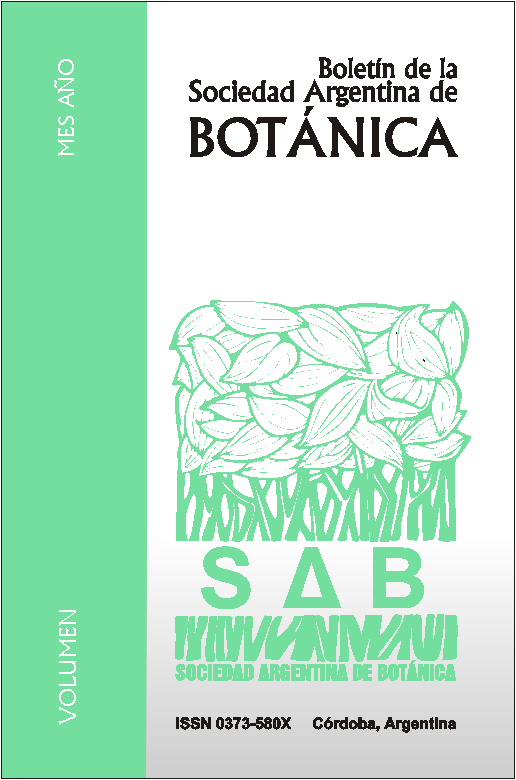Leaf anatomy in Capsicum species (Solanaceae) from different biogeographic South American environments
DOI:
https://doi.org/10.31055/1851.2372.v49.n3.9473Keywords:
adaptations, anatomical features, Capsiceae, chili pepper, taxonomy.Abstract
Leaf anatomy in Capsicum species (Solanaceae) from different biogeographic South American environments. In this work, the leaf anatomy of 13 Capsicum species growing in different Biogeographic Provinces was studied. A comparative analysis of the leaf epidermis and its internal structure was carried out in order to find differences and/or similarities among the species and the presence/absence of mesophytic and/or xerophytic characters according to their environment conditions. The density of epidermal cells, stomata, trichomes and stomatal index were statistically analyzed. The results showed that all the species have similar characters; however, there are some unique features that characterize the species as hypostomatic leaves, presence and types of trichomes, presence or absence of crystals and its variable disposition, fibers in main vein, and probable presence of tannins. Regarding the presence of xeromorphic or mesomorphic characters, the differences were not significant among the species from different environments except for the amphistomatic leaves and the abundance of crystals, and trichomes in species from dry environments. We conclude that the similarity of the leaf epidermal variables and the internal structure observed in the Capsicum species are responding more to a grouping according to their phylogenetic relationships than to the environmental conditions where they live.
Downloads
Downloads
How to Cite
Issue
Section
License
Provides immediate and free OPEN ACCESS to its content under the principle of making research freely available to the public, which fosters a greater exchange of global knowledge, allowing authors to maintain their copyright without restrictions.
Material published in Bol. Soc. Argent. Bot. is distributed under a Creative Commons Attribution-NonCommercial-ShareAlike 4.0 International license.









